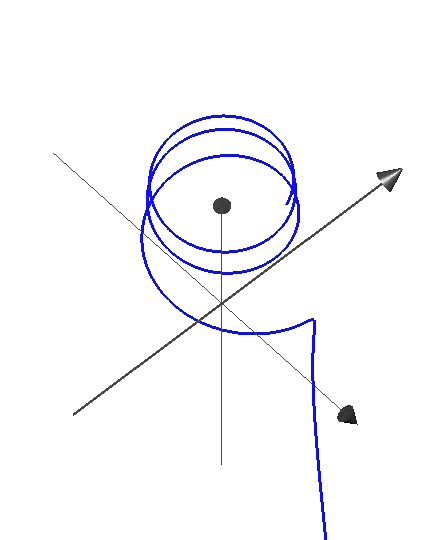What a Springy Parameterization!

The parametric equations for the curve shown are where ranges over . Which function could be equal to?
This section requires Javascript.
You are seeing this because something didn't load right. We suggest you, (a) try
refreshing the page, (b) enabling javascript if it is disabled on your browser and,
finally, (c)
loading the
non-javascript version of this page
. We're sorry about the hassle.
The fact that the helix shown dips below the x y -plane indicates that z should be able to take on negative values, so this rules out e t and t . Lastly, we see that the z value grows much more slowly as t increases, which is indicative of z = ln ( t ) .